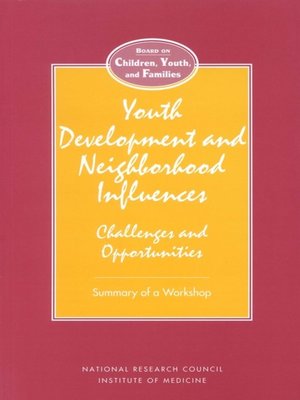Youth Development and Neighborhood Influences
ebook ∣ Challenges and Opportunities
By National Research Council

Sign up to save your library
With an OverDrive account, you can save your favorite libraries for at-a-glance information about availability. Find out more about OverDrive accounts.
Find this title in Libby, the library reading app by OverDrive.



Search for a digital library with this title
Title found at these libraries:
| Loading... |
<p>On January 25, 1996, the Committee on Youth Development of the Board on Children, Youth, and Families convened a workshop to examine the implications of research on social settings for the design and evaluation of programs that serve youth. The January workshop provided an opportunity for the committee to examine the strengths and limitations of existing research on interactions between social settings and adolescent development. This research has drawn attention to the importance of understanding how, when, and where adolescents interact with their families, peers, and unrelated adults in settings such as home, school, places of work, and recreational sites. This workshop builds on previous work of the National Research Council and reiterates its support for integrating studies of social settings into more traditional research on individual characteristics, family functioning, and peer relationships in seeking to describe and explain adolescent behavior and youth outcomes.</p>
<p>Not only does this report examine the strengths and limitations of research on social settings and adolescence and identify important research questions that deserve further study in developing this field, but it also explores alternative methods by which the findings of research on social settings could be better integrated into the development of youth programs and services. Specific themes include the impact of social settings on differences in developmental pathways, role expectations, and youth identity and decision-making skills, as well as factors that contribute to variations in community context.</p>






